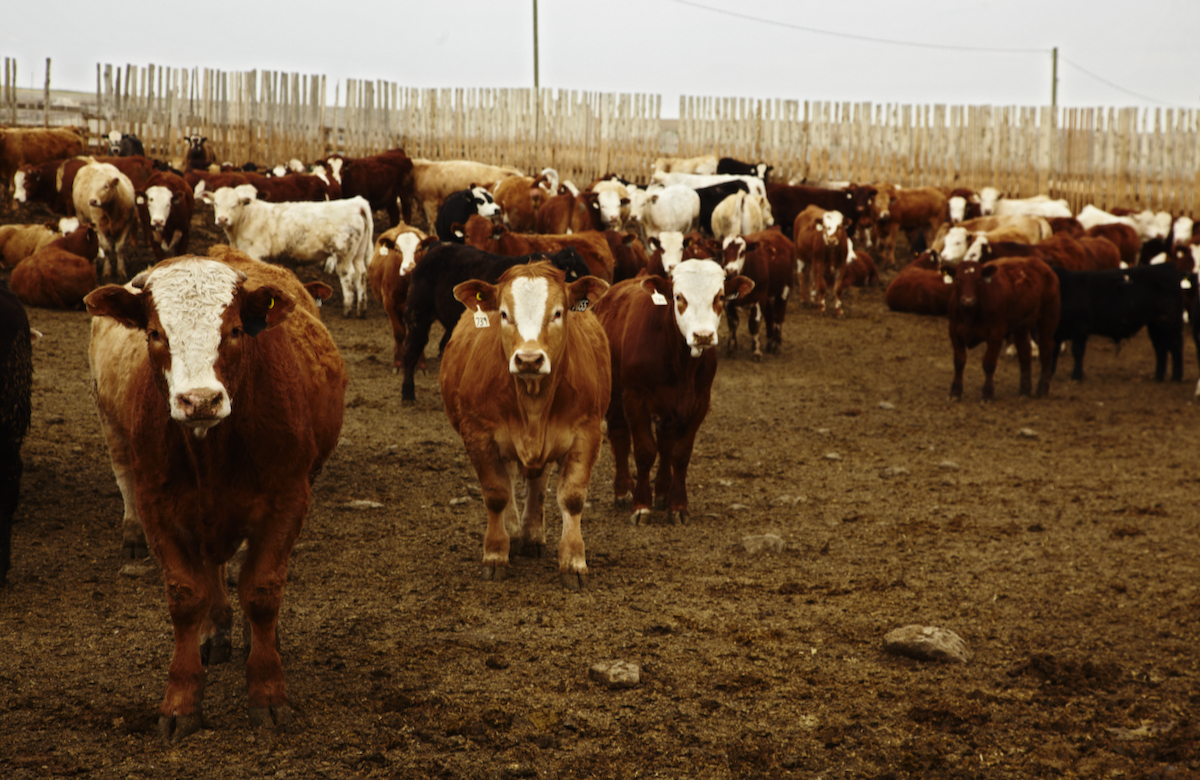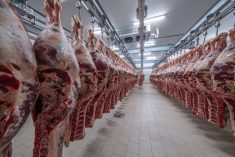Pain control will be required starting in 2016 when castrating bulls beyond a certain age, where beef cattle operations follow the now-updated and finalized code of practice for care and handling.
The Canadian Cattlemen’s Association (CCA) and the National Farm Animal Care Council (NFACC) on Friday released their new version of the Code of Practice for the Care and Handling of Beef Cattle, to replace the previous code developed in 1991.
Researchers, producers, veterinarians, transportation representatives, humane societies, animal enforcement and government took part in the new code’s development.
Read Also

U.S. livestock: Cattle at fresh highs, hogs weaken
Cattle futures on the Chicago Mercantile Exchange climbed to fresh highs on Tuesday, as tight supplies and the ongoing closure…
Cattle operations that follow the code will, as of Jan. 1, 2016, be required to use pain control, in consultation with a veterinarian, when castrating bulls older than nine months.
Starting Jan. 1, 2018, pain control will be required when castrating bulls older than six months of age.
The code also emphasizes that castrations, by any method, cause pain and distress for bulls, “which can be minimized by castrating as early as possible, preferably within the first week of life.”
Early castration, the new code says, also makes it easier to restrain calves, reduces the time taken for the procedure and increases operator safety.
“Current techniques for local anesthesia during castration are not practical at a herd level,” the code notes. “Research is currently underway in Canada to seek practical solutions to these challenges.”
Dehorning
Starting Jan. 1, 2016, the new code will also require the use of pain control to limit pain in dehorning calves at any point after the horn bud attaches itself to the calf’s skull. (Attachment usually occurs at about two to three months of age.)
Disbudding — that is, removing the horn bud before it attaches — “involves less tissue trauma when horn development is still at the horn bud stage,” the new code notes. Nevertheless, both disbudding and dehorning still cause “pain and distress for all cattle.”
That said, the proportion of beef cattle with horns has been steadily decreasing in recent years, as the availability and adoption of polled (hornless) genetics has increased, the new code notes.
“Science has advanced”
The work involved in cattle care “is not often fully understood by people unfamiliar with livestock production and the practices of the industry in general,” Ryder Lee, the CCA’s manager of federal and provincial relations and a member of the code development committee, said in a release Friday.
“The updated (code) will give people a better understanding of all that’s involved in raising beef cattle,” Lee said.
Since the previous code was developed in 1991, “science has advanced, public interest in agriculture has changed and practices have evolved,” NFACC said in 2012 when the new code’s development was underway.
The code of practice is considered “one way to address customer, consumer, retail and activist concerns about how Canadian beef cattle are raised,” NFACC said. “Industry leadership on this initiative is the preferred option over government regulation.”
“Beef producers care about the welfare of our animals and we work to protect their health and well-being,” Manitoba Beef Producers president Trevor Atchison said Friday. “These renewed national guidelines will allow us to demonstrate that to the public at large.” — AGCanada.com Network
Related story:
Beef code of practice open to comment until March, Jan. 22, 2013
















